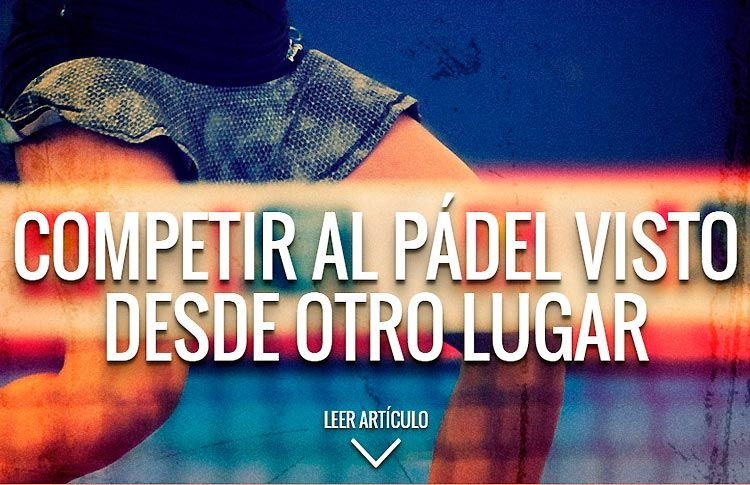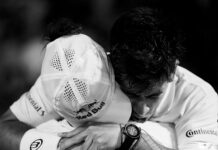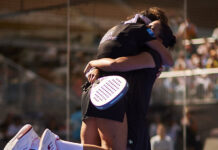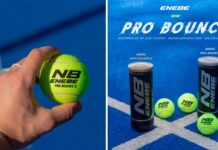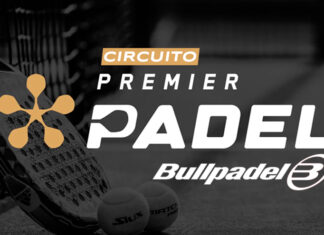Padel World Press .- We often meet many paddle players who hit the ball rather badly but play very well. We remember that there are two types of pleasures in this sport: The first, and basic, is to hit the ball. That is to say, Enjoy each stroke because that will be the first satisfaction. However, many players stay at this point, hitting him for hitting no matter more than that.
Now we distinguish many others, the majority, who are all those who follow our articles and those who care, beyond the blow itself, its result. Whether it is effective or not, to redo it or abort it.
We discard the first case of the players, who are the ones who usually play very few paddle matches and do it occasionally with friends, without caring about the effectiveness. They take it as something recreational, which is one of the virtues of the growth of this discipline ... However, over time, begins to ignite the flame of competition. The adult game and the goal of the 'goddess of excellence', be the best (of what you can be) and this is what is valuable.
UA high-competition athlete thinks of each shot as if he were driving on the road. Straight, visibility of day, without cars in sight, several lanes ... All conditions are being given to drive easily or to execute their easy shots until, in a moment, the road becomes sinuous, many cars come and go , the day darkens and a crazy rain appears ... That's where the driver slows down and makes his maneuvers safer.
And that's what happens in a game, with a small difference: Driving can be life in an error but, in the paddle, what we are going is only a point. In that sense, if we thought about each point as in driving, it is most likely that we would not make mistakes ... That's what our sport is about.
Win-continue; lose-change
When we are winning we must continue doing the logical thing. When we lose, there we can risk a little more but without doing crazy things.
On the other hand, to modify any play, the only option is to REPEAT. It's no use talking about it, you have to practice it. When an action does not come out, there are two types of decisions: Keep trying until losing the game or, more advisable, avoid it for that match. Then we can practice it in training. Hence the 33-66 rule ... That is, if every 3 shots, 2 are good, go ahead. If from each 3 shots, 2 are bad, avoid it.
This is very common in shots or shots from the bottom, with more or less risk. There are also the 'treacherous trays', which are balloons that do not seem to have great complexity and, when we get that trap, they are given more speed, which makes us lose the point.
If we compare the padel with many other team sports we will notice that in soccer, for example, each player has a function: some attack and others defend. Here is another problem that we find is that, in tenths of seconds, you can go from the most 'ferocious' attack to the most complicated defense. But being the same player who must think in two different ways, falling many times in that trap.
Take the network
The domain in the network becomes fundamental. Remember also that in the network we only have to 'make center', that is to say, hit it in the center of our shovel.
At the bottom of the track the problems multiply because you must decide in tenths of a second if you hit after the pot, botepronto, volley or if you let that ball pass to hit it after a rebound, two rebounds, turn or separate from Wall.
If the reader got here, surely a while ago he realized that it is easier.
Only one 5% of the hits is used for auctions. But more complex is to think that in a duel they hit more than 400 shots, it means that only 20 are for those shots. And as a curiosity, how is a new shovel 'proved'? Hitting shots against the wall ... Not surprising?
70 and 30
This is the ratio of need between attack and defense training. As we said, alternatives are much more at the bottom of the track, so we should divide our time in those quantities. It is clear that we all like to volle and finish but the adult game is the one that analyzes all these things and, if you want to win, you have to do many things well ... Because the way is not to win but to make a sum of good things that it is what will allow us to obtain the best result, which does not always go to achieve victory. That is why we say that who only plays to win, if he loses, has a failure while who plays to do everything right, if he loses, he will only have one defeat ... And that is a big difference.
With the rival in the background to the holes, with the opponent in the net to the body
Very simple, when they are in the net, look for their volleys and auctions to the empty spaces, if possible in a crossed way. Thus they will have more time to execute their next shot because the opponent must let the ball bounce. On the other hand, when the opponent is in the net, it will be necessary to play the shots to the body, whenever possible to the opponent crossed to us. This way they will not be able to have great shots of power and, therefore, they will be able to neutralize their blows with ease.
When it comes to draw, it is interesting to propose action, be aggressive and, with determination, you have to try to win fast. At the time of subtraction, you must 'punish' putting a lot of balls, looking for long points and causing greater wear on the opponent. To summarize this concept: You have to try to win quickly when we get out and lose slowly when we subtract. This will greatly influence the minds of opposites.
* You can follow all the news of the world of paddle in our profiles of Facebook y Twitter as well as subscribe to our Newsletter .

